Niijima Glass: Transforming Koga Stone into Art
Oct 24,2024
Niijima Glass: Transforming Koga Stone into Art
Oct 24,2024
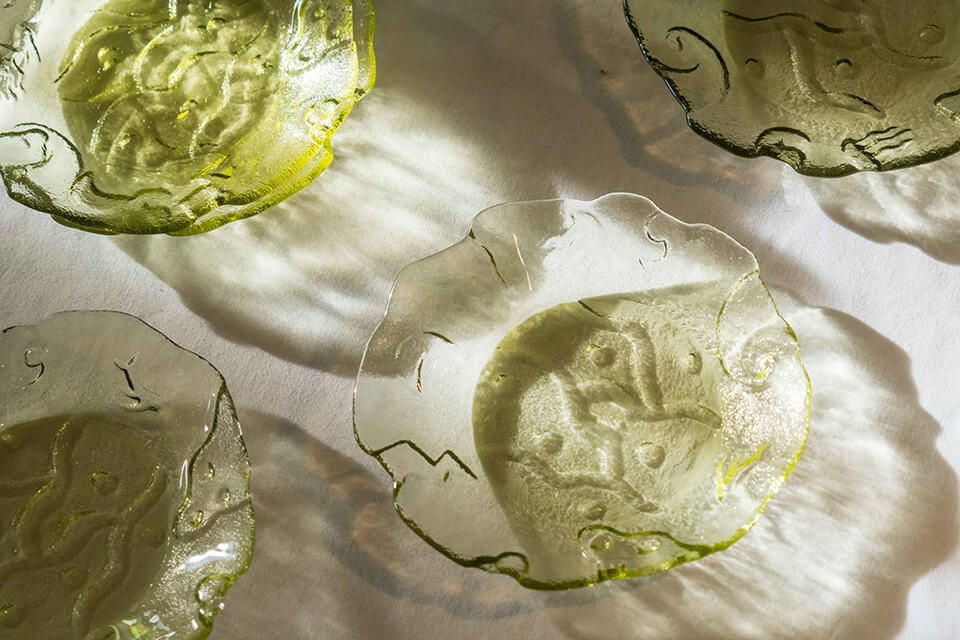

The Niijima Glass Art Center is the only place in the world that produces glass with a deep olive-green color from kogaseki (pumiceous rhyolite) volcanic rock. The Center opened in the village of Niijima in 1988, founded by the couple Noda Osamu and Yumiko and the village of Niijima (with administration support from the Tokyo Metropolitan Government), as a community facility to develop new culture, industry, and talent on Niijima. Since its establishment, the Center has been at the forefront of exploring new possibilities in glass art. It’s also home to the annual Niijima International Glass Art Festival, which attracts artists from around the world and has developed a reputation as a venue for deepening exchanges and promoting the development of the glass art world. We made our way to this world-renowned place full of beauty.
After arriving at Niijima Port, if you drive south away from the village center, you cannot miss the Niijima Glass Art Center nestled along the coastline. The building, with its distinctive arched roof, is made from kogaseki rock and exudes the rock’s solid presence.
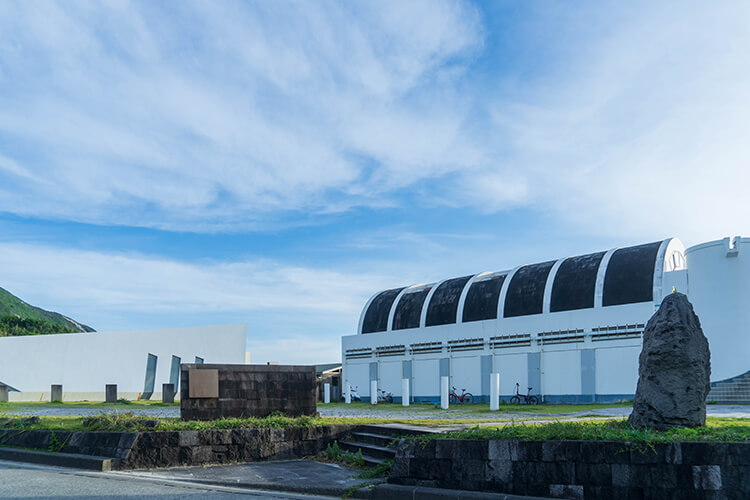
The building in the foreground is the Niijima Glass Art Center. To the rear is the Niijima Glass Art Museum, which is currently undergoing renovations.
The Nodas, Osamu and Yumiko, both glass artists, welcome us at the Center. The couple met while attending Tama Art University. They went to the United States after graduating to study glass-making, before returning to Niijima.
Yumiko recalls: “We didn’t plan initially to live on Niijima permanently.” However, finding out about kogaseki rock, which exists only on Niijima, essentially made the decision for them.
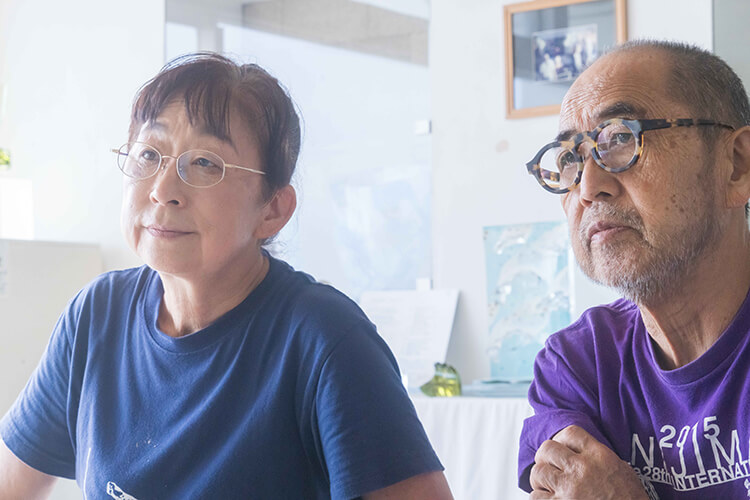
Glass artists Noda Yumiko and Noda Osamu. Osamu is a Niijima native.
The kogaseki rock extracted on Niijima, a volcanic island, was originally used as a local building material, although demand for the rock has tapered off over time. The island’s village office became interested in the composition of the rock and had it analyzed at a lab. The results showed that the rock was more than 80 percent vitreous (solid glass material). The person selected to work with the rock was none other than Osamu, a Niijima native and active glass artist. After being approached, the couple took on the challenge of developing techniques to produce glass using kogaseki rock.
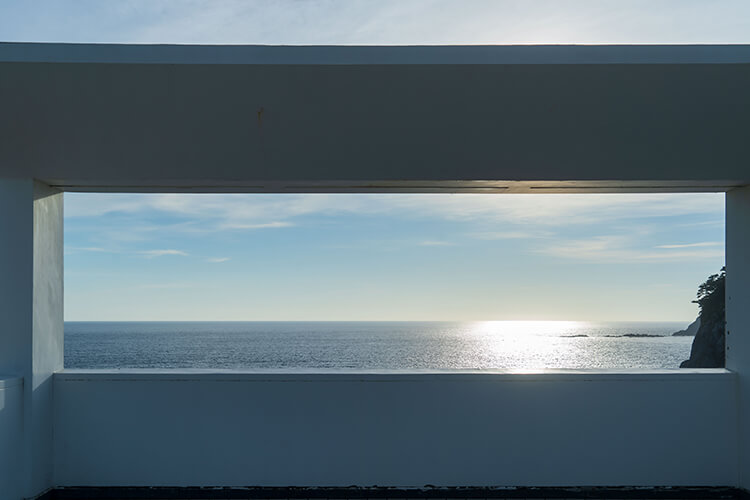
A view from an art center window of the beautiful ocean waters stretching out to the horizon
Niijima glass, which emerged by using kogaseki rock to form glass, has a distinct olive-green coloring not found in any other type of glass. This beautiful hue is the result of the iron contained in kogaseki rock — an aesthetic beauty one could call a miracle summoned by nature.
Turning the rock into glass, however, requires higher melting temperatures than normal and demands advanced technique, as the working time is shorter too. Despite these difficulties, the Nodas persisted and created Niijima glass, which is unique in the world, in pursuit of a singular beauty.

The glass’s muted olive-green coloring is a work of nature
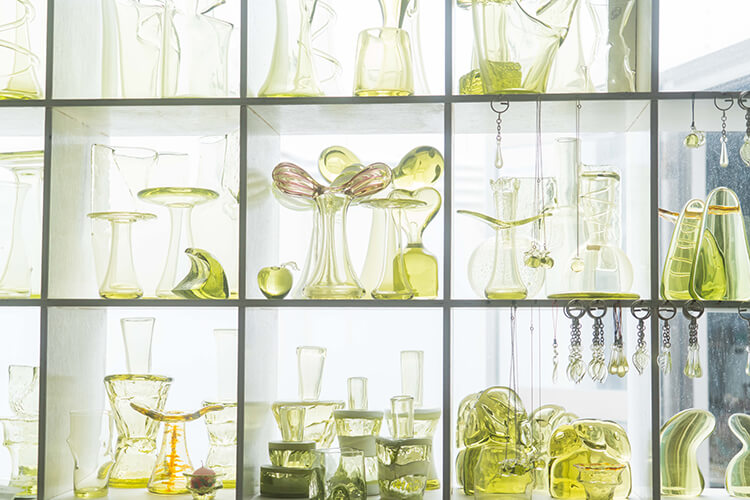
The Center has on display a wide variety of Niijima glass works, including tableware, flower vases, and art curios
Yumiko explains: “Kogaseki rock was the first material we had encountered with completely different properties from the industrial glass we were familiar with. I remember being dumbfounded at how difficult it was to work with.”
Osamu continues recounting their memories: “Nevertheless, when we saw the completed work take shape, we were mesmerized by the beauty of its olive-green coloring and the glass’s high quality that so exquisitely passes light. The rock’s negative attributes of being very hard and difficult to work with are, conversely, what lend the glass its distinctive nature. We saw an opportunity to create a new industry on the island, and we felt that since we had no precedent to follow, we had to bring it into being ourselves, piece by piece.”
Today, you can see Niijima glass in souvenir stores, izakaya pubs, and many other places on the island. The techniques for producing Niijima glass were created from scratch by the husband-and-wife team.

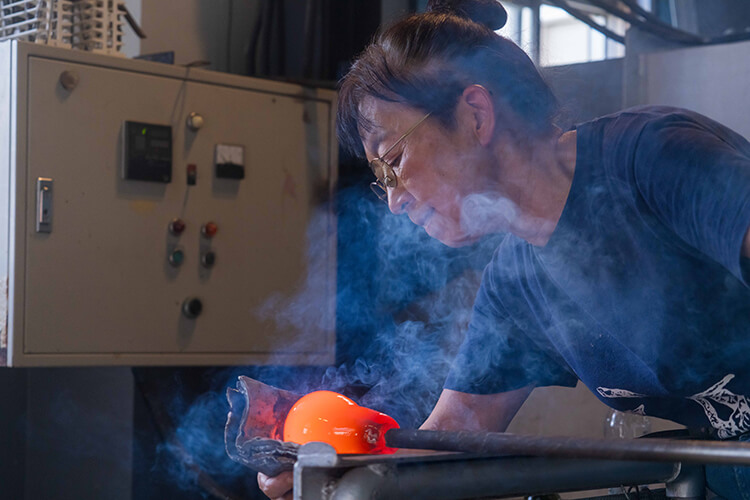
The glass workshop in mid-summer is even hotter than usual. Yumiko makes a work from glass that melts at 1400°C.
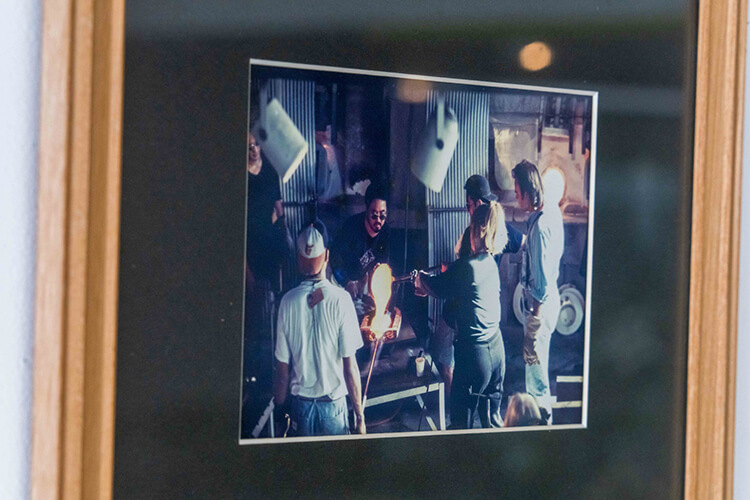
The Niijima Glass Art Center is involved in more than just producing glass works; it is a venue for revitalizing the local community and promoting international exchanges. The annual Niijima International Glass Art Festival symbolizes this role. The festival, which began in 1988, invites glass artists from around the world and facilitates technical and cultural exchanges through workshops and exhibitions.
“Our inspiration for the festival came from the experiences we had at the Pilchuck Glass School, which we attended as international students in the U.S. In America, we saw first-hand how open everything is and how people from around the world sharing their knowledge and experiences creates a richer culture. Conversely, at the time, Japanese glass-making was a closed, almost secretive, industry that didn’t share its techniques. So we thought we would try to change that starting in Niijima. When we put out the call, many friends from around the world agreed to help us. With their support, we have been able to create an event in which famous artists give lectures and demonstrations and that provides valuable opportunities to learn about the history of glass-making as well as the latest techniques.”
The 35th Niijima International Glass Art Festival was held in 2024. The festival has established Niijima as a brand and an international crossroads for the glass arts. And as a bridge connecting the local community to the wider world, the festival will surely continue to impress and energize many people and widen the scope of artistic inspiration.
The Nodas have transformed kogaseki rock, which has supported islanders’ lives for centuries, into the familiar substance of glass and reshaped it into something with international value. The couple is now putting their energy into training people to follow in their footsteps. There are always four or five young trainees working beside them at the Niijima Glass Art Center.
“We see our roles as both spreading awareness of Niijima glass and passing on the techniques and lessons given to us from our many predecessors to the next generation.”
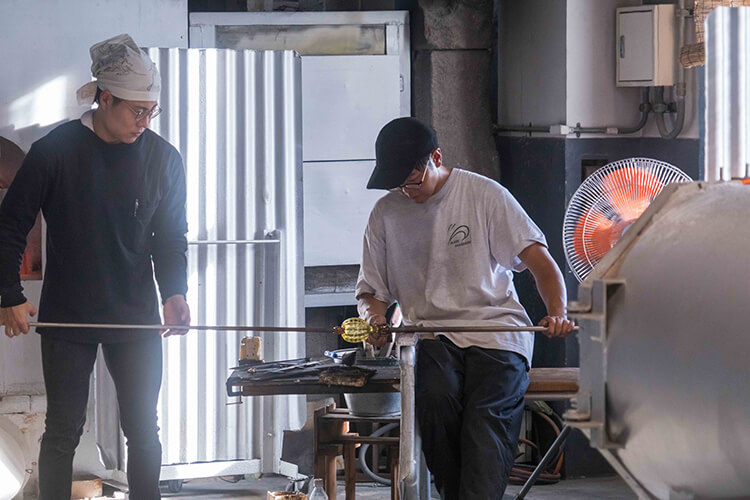
Trainees also produce glass works at the workshop
The couple has focused on apple curios as a new symbol of Niijima glass.
“Apple curios are one of our signature works at the Niijima Glass Art Center. They are very popular with tourists. Their translucent green coloring and their unique way of reflecting light make them really stand out. What we are thinking about now is getting tourists to share on social media photos of the glass apples taken with Niijima vistas in the background. It would be fantastic if this would broaden the appeal of Niijima’s beauty viewed through glass.”

The ocean of Niijima seen through apples made of Niijima glass
Niijima glass is about much more than just arts and crafts; it is a symbol of the island, embodying Niijima’s nature and culture and the aspirations of its people. Following generations are certain to carry on and expand upon this beautiful glass brought into the world by the hands of the Nodas.
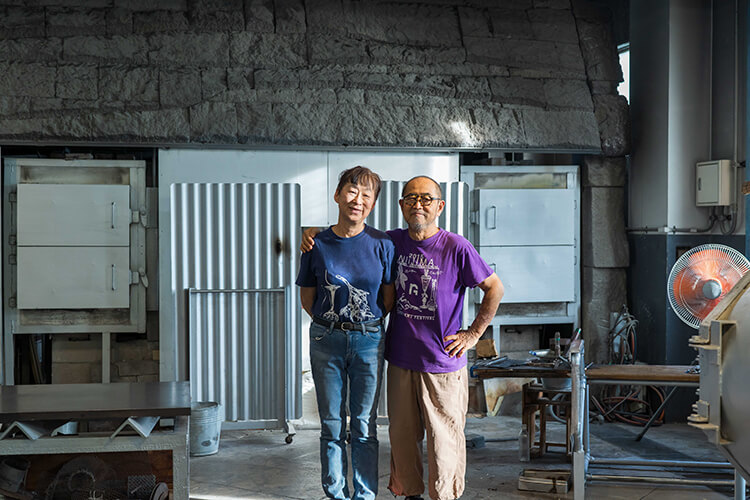
The Nodas in their workshop
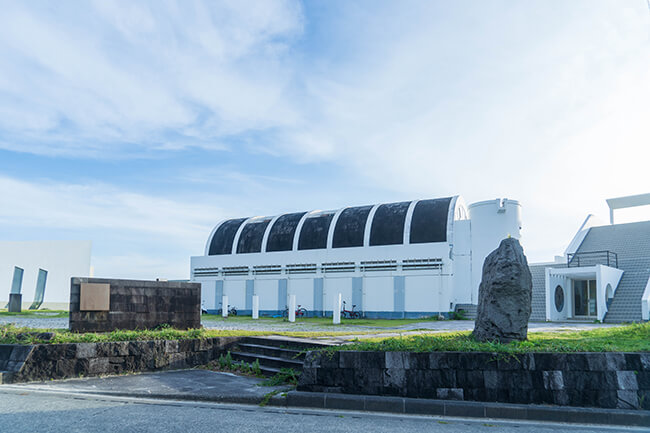
Getting to Niijima takes two hours and 20 minutes by high-speed jet ferry or eight and a half hours by overnight ferry from Tokyo’s Takeshiba Sanbashi Pier. There are also ferry services from Kurihama Port in Kanagawa and Shimoda Port in Shizuoka.
Contact Tokai Kisen at 03-5472-9999 or 0570-005710
URL:https://www.tokaikisen.co.jp/en/